| After Homestead we headed for the coast and the Biscayne National
State Park. Along the way are a number of plantations where they grow palms
for the garden centres to sell to folk for their gardens. This is a
plantation of royal palms. This area had been badly hit by Hurricane Wilma,
so it is surprising that these trees are looking as good as they do. | 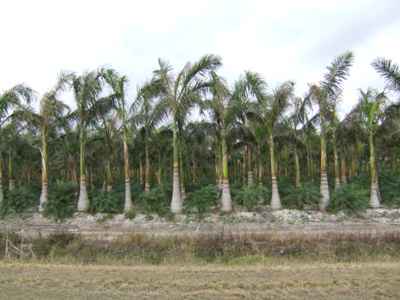 |
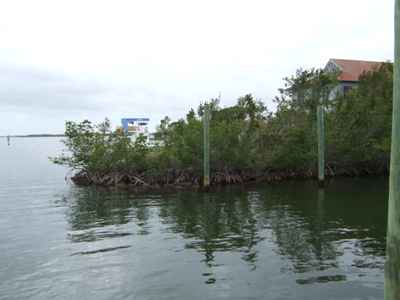 | The park is
mostly water, containing the largest and best coral reefs in the US. These
can be visited by going on diving or snorkelling excursions, or by taking
trips in a glass-bottomed boat, but you need reasonable visibility for this.
Unfortunately when we visited there had been high winds and therefore choppy
seas which had seriously reduced the visibility, so we decided that it
wasn't worth taking any of the trips at that time. This park had also
suffered from the ravages of Wilma, but only the winds - the odd thing was
that instead of being inundated by a storm surge, the wind had driven all
the water OUT OF the shallow Biscayne Bay, leaving just the sandy bottom.
So we just took the short boardwalk from which one can view the mangroves.
These are quite happy living with their roots in saltwater. |
| Florida lives on tourism. This is the raceway where the racecars
meet and they hold speedway events. It is in the middle of nowhere but
surrounded by a huge car park. You can't live round here without a car. | 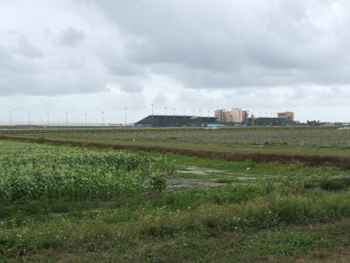 |
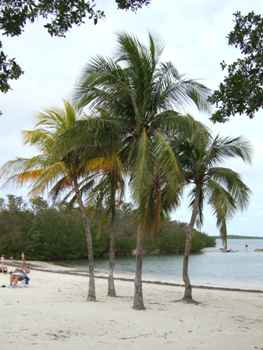 | Then we
travelled on to the John Pennekamp State Park. Amongst other attractions it
has a small beach shaded by palms, but most of its visitors seem to be
rather more interested in water activities, mainly sea fishing. |
| There are also more areas of mangroves, clearly seen here with
their roots extending into the salt water. They make an absolutely
impenetrable wall from the water. | 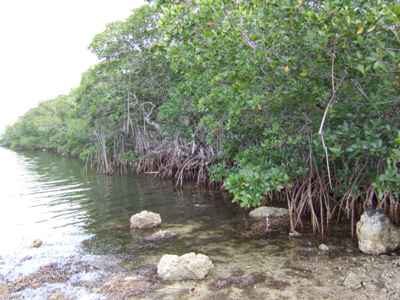 |
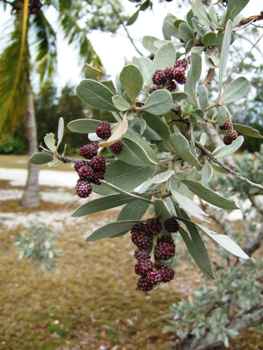 | This is silver
buttonwood, which has slightly furry silver-green leaves. It caught our eye
because it has small fruits which reminded us of raspberries. |
| The park has a small, free aquarium with a variety of salt and
freshwater fish. One tank has a couple of lobsters just wandering about. For
once these lobsters in a tank were not about to become lunch! | 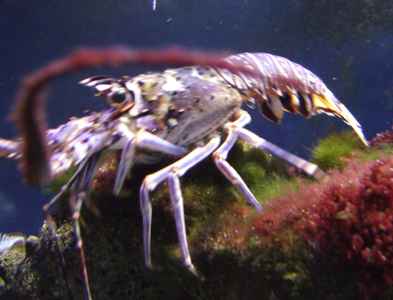 |
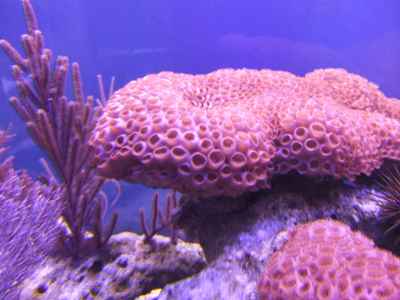 | The sponges are
amazing colours. These are softly moving in the currents and the colours are
very vivid. |
| Sea horses are almost transparent but in aquarium lighting they
really show up brightly. This was one of three sea horses we saw in this
tank. | 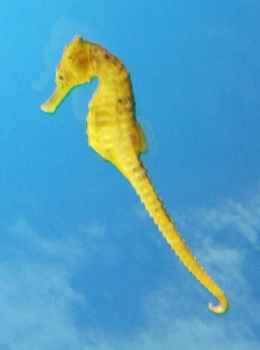 |
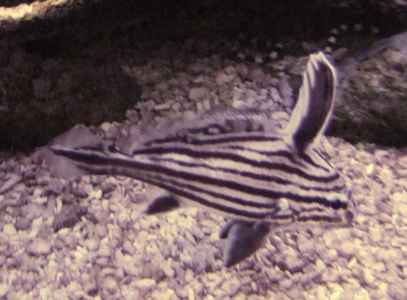 | There are other
spectacular reef fish in the tanks including this zebra-like fish with a
large dorsal fin. Seawater marine fish are always so vivid. |
| They have no live crocodiles but this stuffed one has pride of
place in one of the cases. Note the very narrow snout - alligators have
rather wider snouts. This is a small one, only about six feet long. | 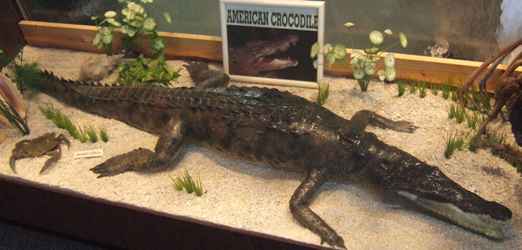 |
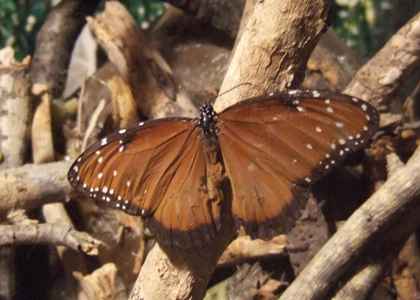 | Other static
displays feature other creatures including this butterfly. They are so hard
to photograph in the wild... |
| unlike the small lizards which are all around you. All you have
to do is sit quietly for a few minutes, then you spot them as they move. Jan
watched this one catch and eat a ladybird, then spit out the wings. As usual
it is about twice life size. | 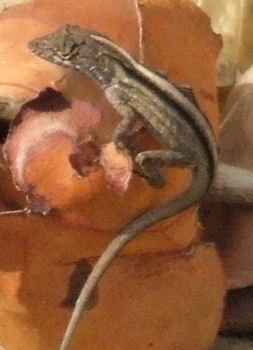 |
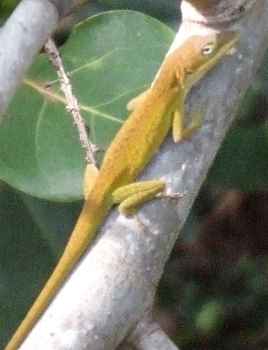 | |
Jan spotted this one on a branch just feet from our camper. It started off
as a yellow-brown, but in a matter of moments it had turned bright green.
This is the same creature, and the colour change occurred in under a minute.
It then moved off among the leaves. Perhaps obviously, it is called a green
anole. |
|
| Among the leaves again, and we caught this character (again about
twice life size). I'm using the digital zoom more now. | 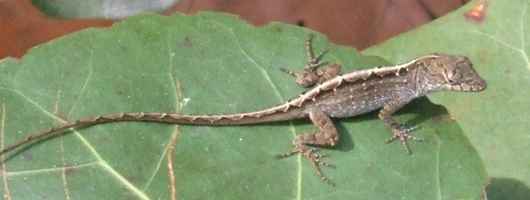 |
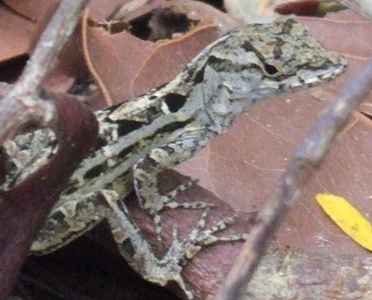 | It isn't
usually a focus problem, but more a matter of holding the camera still. This
is about four times life size.. |
| And this bug is blown up even more. Jan kept turning the stick as
it ran up and down. I don't think she was keen on it running up and down her. | 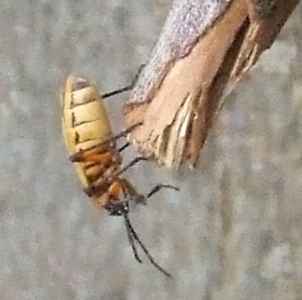 |
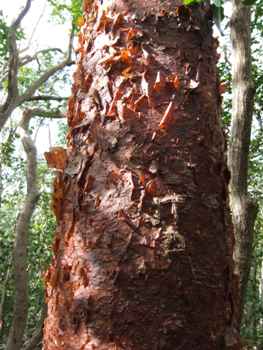 | .This is the
trunk of a gumbo limbo tree, which is often known as the tourist tree,
because the flaky bark looks like the peeling skin of the sunburned tourist. |
| Boats also travel out from John Pennekamp to the reefs where you
can view the corals and snorkel or skin dive. The wind and choppy seas over
the last few days had also stirred up the sandy bottom and ruined visibility
here. As a result they weren't running the reef tours. Maybe it would
improve in a few days but by then we had to move on. | 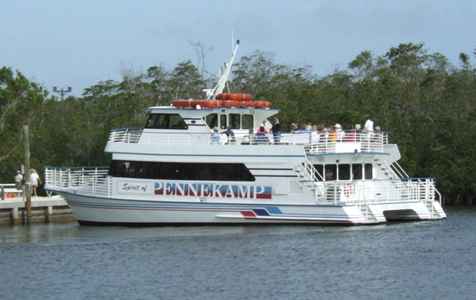 |
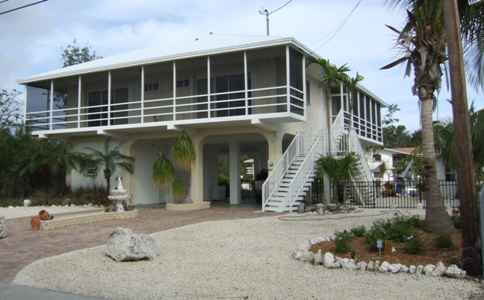 | Most of the
houses in this area are built on stilts with nothing important on the ground
floor. Remember that the damage in a hurricane comes from the storm surge. |
| In the car park we found this bus belonging to Homeland
Security. Presumably it is used as a prison transport when they find illegal
immigrants from Cuba or other Caribbean islands. | 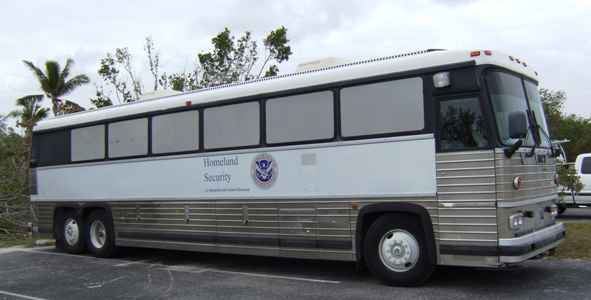 |
|